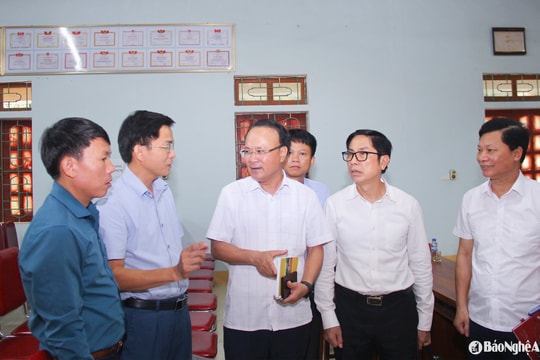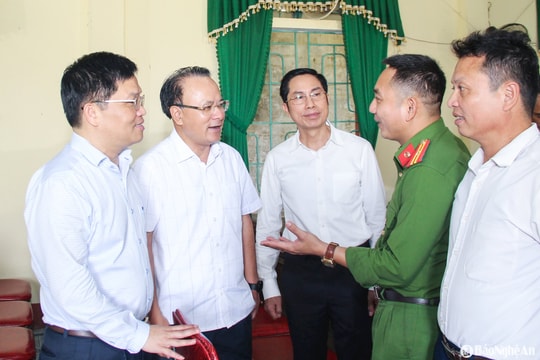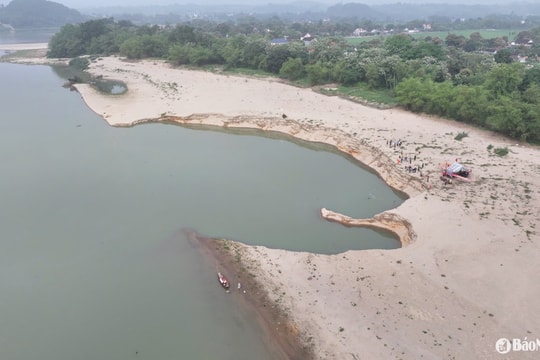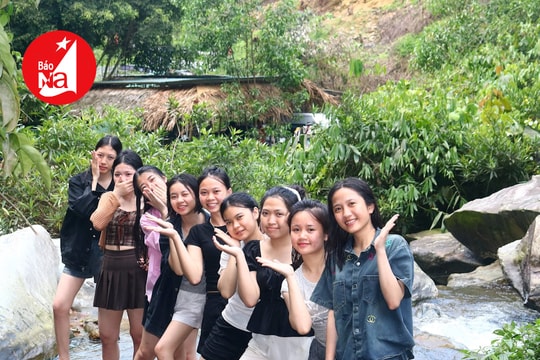The mark of the Hoa Quan midland
(Baonghean) - The first impression when setting foot on Hoa Quan land, now Thanh Huong commune (Thanh Chuong) is the charm of the midland landscape with endless green hills, winding rivers and prosperous villages. The old name evokes so much beauty, and the past is the foundation for future generations to build today's life.
Surely anyone who has ever gone upstream on the Giang River to Co Phat village, Mon Son commune (Con Cuong), has heard the Dan Lai people living here tell stories about their origins. The general idea is that they are Kinh people, people from the lowlands. Several hundred years ago, their ancestors lived in the mountainous forest area of Hoa Quan (Thanh Chuong), making a living by growing corn and hunting, often being harassed by the royal court's soldiers. One time, unable to bear the oppression, they bravely resisted and were chased into the deep forest.
The Dan Lai people's escape journey followed the Giang River, to the upper reaches, close to the Vietnam - Laos border, to find a place to hide and disappear. From then on, they became residents living in the heart of the Pu Mat forest, their hearts always turning towards the Hoa Quan homeland, where their ancestors were once attached.
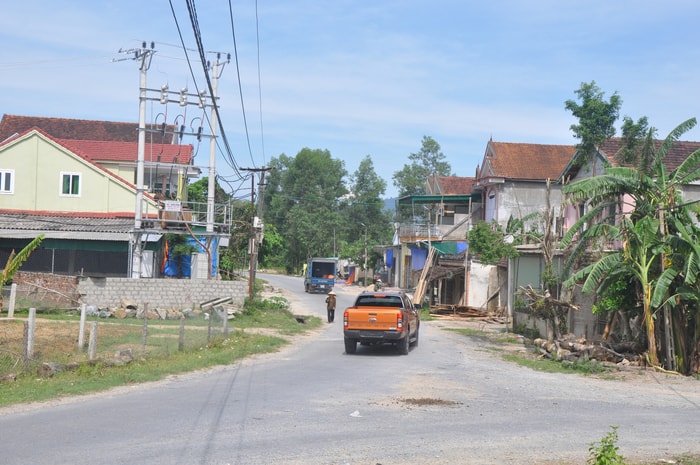 |
| A corner of Thanh Huong commune (Thanh Chuong) today. Photo: Cong Kien |
For us, from the tragic story of the Dan Lai people, we have long cherished the plan to have the opportunity to visit the land of Hoa Quan, hoping to know part of the origin of the land with this meaningful name. Actually, when I was a university student, I followed my friends to Thanh Huong a few times, but my purpose at that time was only to satisfy the pleasure of visiting and looking around a midland countryside, not knowing that there was a land whose name was associated with the tragic stages of an ethnic group. I still remember, every time I returned to Thanh Huong commune, I got to enjoy hill chicken, sticky rice, and swim in the Trai river. And that also made the boys so happy that nothing seemed to compare.
This time, I returned to Hoa Quan land, my old friends have now "spread their wings in all directions", some went to the North, some went to the South to find a living. I visited the parents of my best friend from university, now he is a Literature teacher and has settled down in the Central Highlands. Time makes people older, my friend's parents have also aged a lot, but they still recognize me and recall memories from years ago. In particular, this year he is over 70 years old, but the father still remembers many events that took place in his homeland, and also remembers stories passed down from the past. And, we were lucky to come here by chance to meet a source of "living documents".
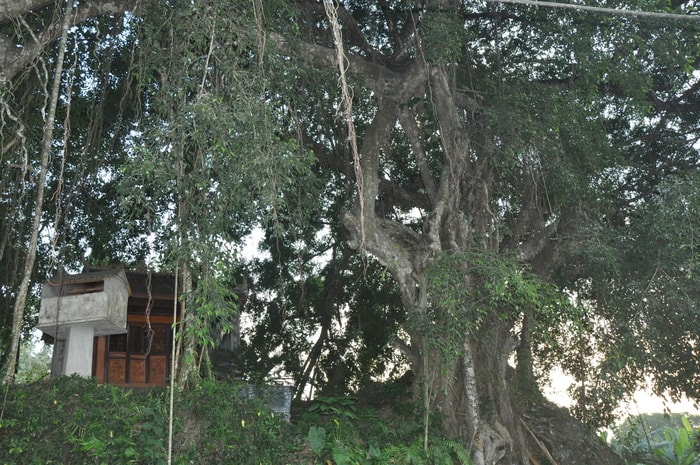 |
| Ham Rong Temple is located under the shade of an ancient banyan tree by the people of Thanh Huong commune (Thanh Chuong). Photo: Cong Kien |
According to the father of a friend, Hoa Quan commune used to belong to Vo Liet commune, Thanh Chuong district, after several times of separation and merger, merger and separation, it now has the name Thanh Huong. This is an ancient land, existing in both the names of mountains, rivers and villages: Rong Trai, Rong San, Dai Can hill, Sung Bo hill, Nhon island, Eo Treo, Rao Lang, Rao Man Tac, Vuc Su, Hoi Tep, Hoi Thuong Luong... Perhaps, this is an important source of data for Vietnamese linguists to research the history of phonetics, thereby determining the history of formation and development of the land.
Later, realizing that Hoa Quan was a vast land, with vast mountains and forests, favorable for making a living, residents of the communes along the Lam River came to settle down, joining forces with the local people to reclaim the land, build villages, and a rich and cultural homeland. In the 18th century, Hoa Quan was one of the strategic locations chosen by Le Duy Mat as a military base, training day and night to fight against Lord Trinh, aiming to restore the Le Dynasty. The following century, when the Can Vuong movement developed widely, the commander Phan Dinh Phung sent people here to recruit soldiers to fight the French. Dozens and hundreds of children joined the army.
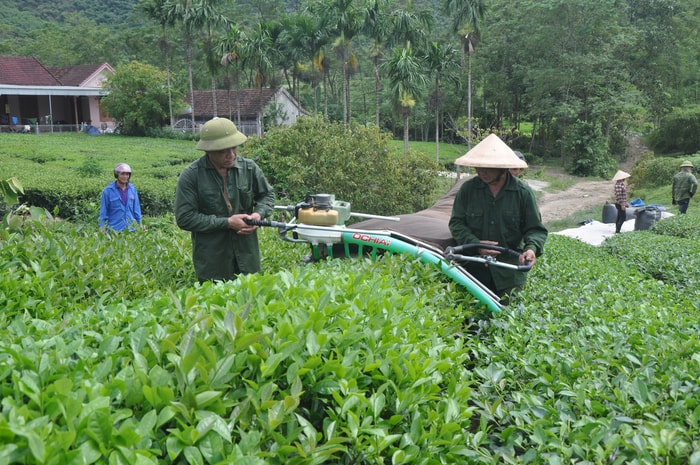 |
| Farmers in Thanh Huong commune (Thanh Chuong) harvest raw tea. Photo: Cong Kien |
In the past, Hoa Quan village had many spiritual architectural works, mainly temples, pagodas, communal houses, and shrines. Among them, Am Pagoda is the most ancient work, where the bells used to ring every hour to pray, and is also a pilgrimage site for local people on full moon days and holidays, Tet. Next to it is Phu Nhom Temple with a history of nearly 1,000 years, standing majestically by the gentle Trai River, also a sacred place for people to entrust their spirituality, praying for favorable weather, national peace and prosperity.
The flow of time and the ups and downs of the times have caused the ancient temple to deteriorate and be damaged, the royal decrees and sacrificial objects from ancient times have been lost and are still not found. Later, Thanh Huong people restored Phu Nhom temple on the old land but on a much smaller scale, hoping to make it a place to entrust their spirituality and a spiritual support to work and live with peace of mind. People are hoping that one day in the near future, the temple will be restored, upgraded, standing majestically and quietly by the Trai River, becoming a "highlight" of a civilized countryside.
Along with Phu Nhom Temple, Ham Rong Temple is also a majestic spiritual structure in Hoa Quan land. The temple is built next to a high cliff, where there is a giant rock jutting out into the Trai River, looking like a dragon's jaw. The temple was built during the Tran Dynasty, worshiping the mountain god Cao Son, Cao Cac. Every year on the occasion of the New Year, the people in the area enthusiastically organize festivals, the most impressive of which is the palanquin procession throughout the villages with a line of people stretching for kilometers.
During the resistance war against the French, Ham Rong Temple was chosen by Inter-zone 4 as a place to produce weapons to serve the needs of the battlefields. And for unknown reasons, an explosion occurred, damaging the temple and killing 7 military soldiers. Recently, the temple has been restored by the locals on a rock shaped like a dragon's jaw, under the canopy of a hundred-year-old banyan tree. Besides, the ancient Hoa Quan also has a number of smaller but equally sacred temples, bearing bold ancient features such as Hon Truc Temple, Hon Den Temple and Ru Loong Temple.
Another construction that bears the cultural imprint of the village is Hoa Quan communal house, located in the center, where important village events take place such as ceremonies, village and national meetings, festivals with attractive folk games. The scale of the communal house is quite grand with 3 buildings: upper - middle - lower, each building has a different function. During the August 1945 general uprising, Hoa Quan communal house was the place where the handover of official seals, books, and documents of the colonial - feudal regime to the revolutionary government took place (August 25, 1945). This is also the place where the Thanh Chuong District Party Congress (1949) and the Inter-zone 4 Party Congress (1951) took place. After 2 wars in the 20th century, the communal house was degraded and lost for decades. Only now have the structure of the lower communal house been found and initially restored.
After a somewhat passionate conversation, the father of our friend took us around the hamlets to feel the changes in life in the old Hoa Quan land, Thanh Huong today. Along the roads, high-rise buildings have sprung up, especially the Ho Chi Minh road passing through the area has helped Thanh Huong people break through the surrounding mountains and forests, expanding exchanges in all aspects, and improving economic and social life. Schools, markets and medical stations have been built spaciously and all named Hoa Quan as a reminder of the tradition and historical flow of the homeland.
Coming to Thanh Huong, you will be immersed in the vast acacia forests, lush corn fields, immense tea hills, the charm of palm trees and herds of cows leisurely grazing on the hillsides, adding to the beauty of the midland landscape. In particular, for generations, Thanh Huong people have taken advantage of forest land to grow raw tea trees. Currently, the whole commune has more than 140 hectares of tea, harvesting about 15-20 crops each year, bringing in a considerable income for each family. Tea trees, acacia trees, rice, corn and other vegetables have helped Thanh Huong farmers stabilize their lives, and some households have become well-off and rich.
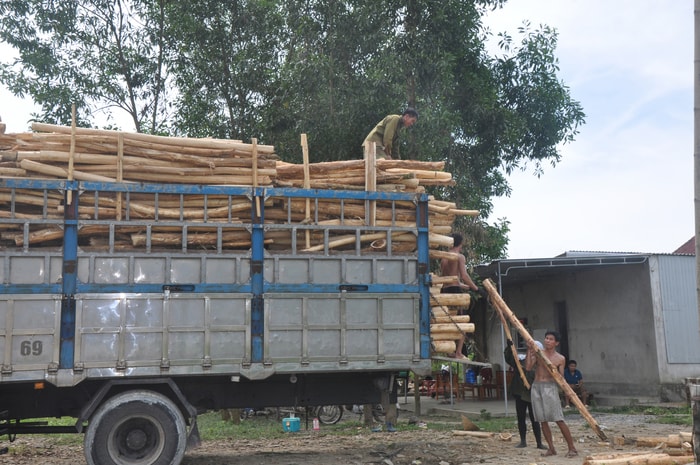 |
| Purchasing raw glue in Thanh Huong commune (Thanh Chuong). Photo: Cong Kien |
We left Thanh Huong when the afternoon shadows fell on the acacia forests and tea hills, farmers were calling each other to go home after a day of work, every face was sparkling with joy. The rustic countryside, the simple but sincere people and the midland scenery made our steps more lingering...
Cong Kien
| RELATED NEWS |
|---|


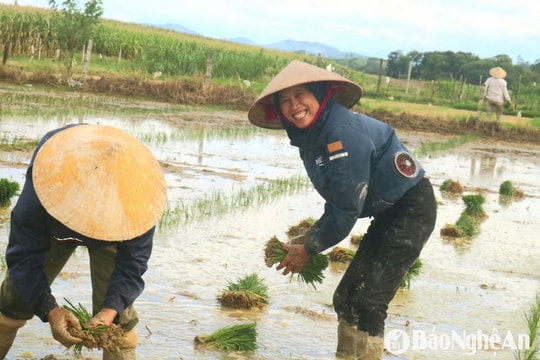
.jpg)
